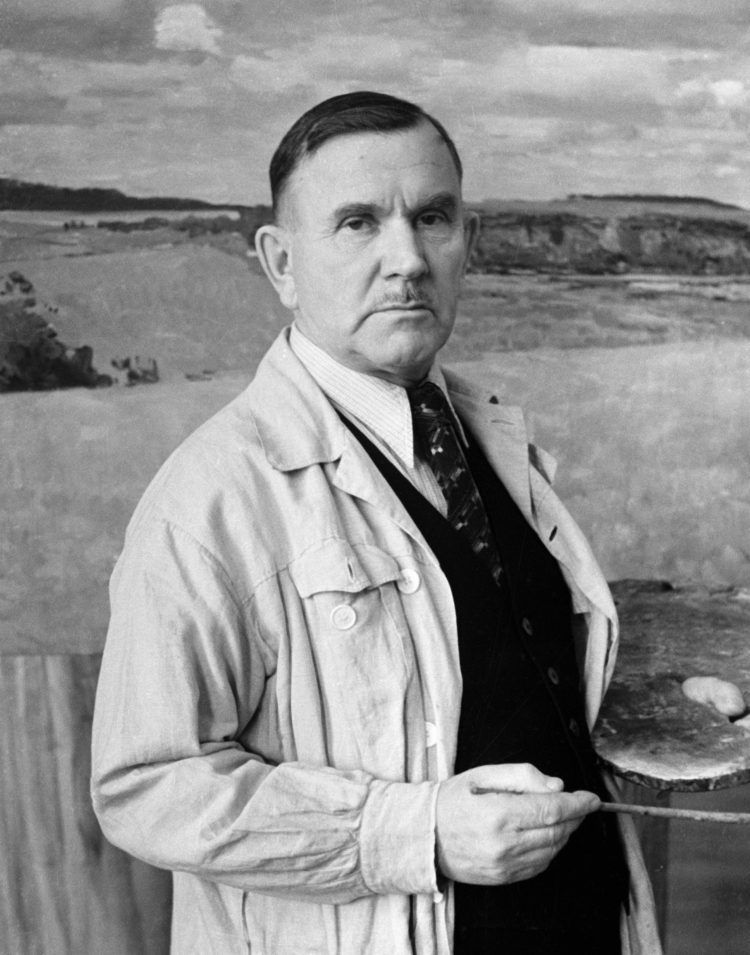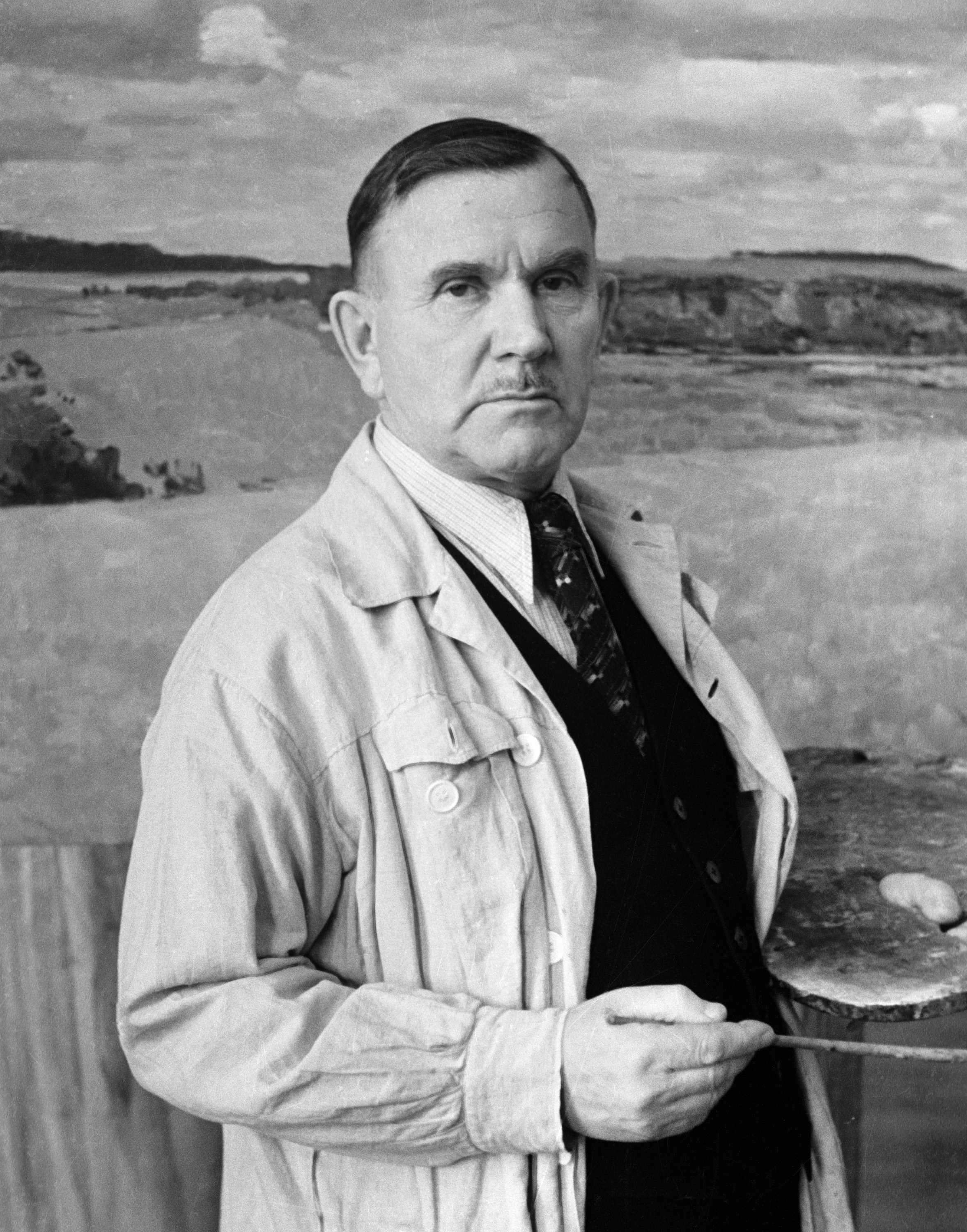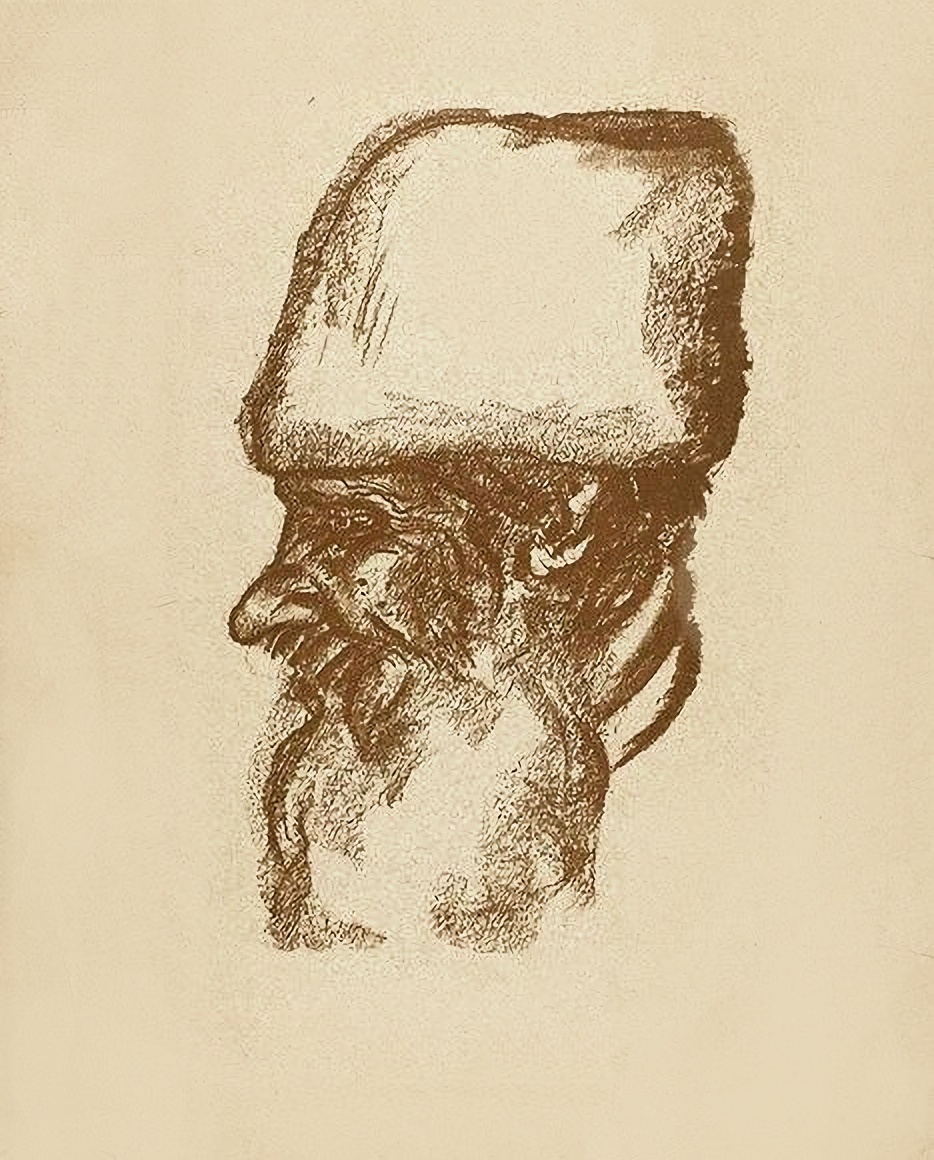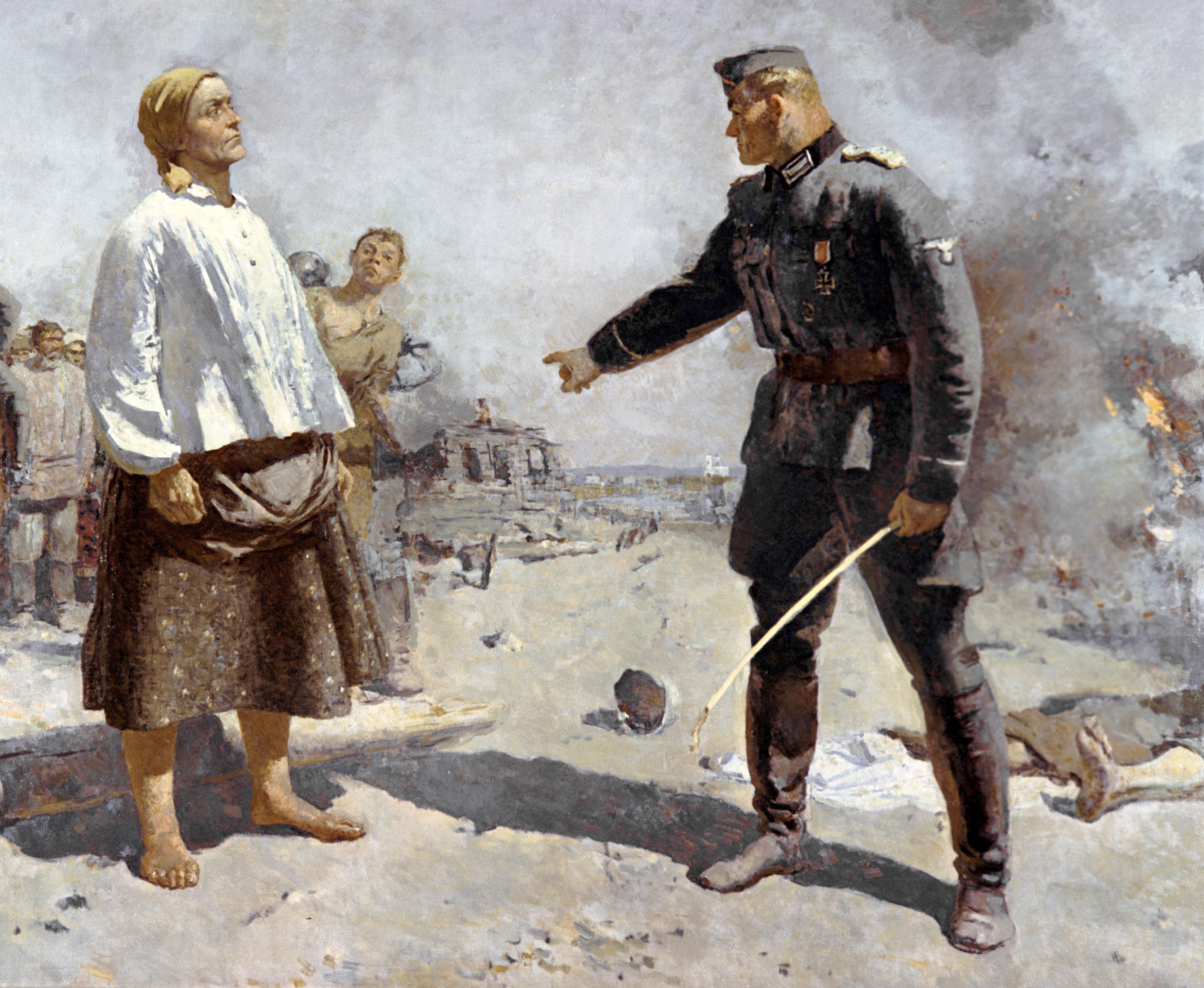140 years ago, artist Sergei Gerasimov was born – "a fighter for art true to life."
Published: by .

People's Artist of the USSR and one of Moscow's leading exponents of Socialist Realism, Sergei Vasilyevich Gerasimov was born on September 26 (September 14, Old Style), 1885, in Mozhaisk, Moscow Province, to a family of artisans. From early childhood, Sergei was interested in fine art and delighted in examining color reproductions of famous paintings by Repin, Shishkin, Vasnetsov, Raphael, and Michelangelo, published in the then-popular magazine "Niva."

Vasily Malyshev / RIA Novosti
People's Artist of the USSR, painter, full member of the USSR Academy of Arts Sergei Gerasimov. 1952
Sergei Gerasimov received his primary education in an ordinary village school, then attended a city college. At age 15, he entered the Stroganov School of Art and Design in Moscow. At the time, it was home to leading Russian artists Sergei Ivanov and Konstantin Korovin, who became Gerasimov's primary mentors. After graduating from the Stroganov School, Sergei Vasilyevich spent another four years—from 1907 to 1911—studying at the Moscow School of Painting, Sculpture, and Architecture.
During his studies, Sergei Vasilyevich painted a lot of what he knew and felt best. These included genre scenes from provincial life, as well as images of Russian nature: "Mozhaisk Rows," "Bazaar in Mozhaisk," "Family," "Wedding in a Tavern," "Winter," "Moonlit Night," and "Mozhaisk. First Snow."
In 1912, Gerasimov received the title of artist of the first degree for his watercolor portrait of a man. He then traveled to St. Petersburg to explore the art of the old Western masters. But his passion for ancient Russian culture ultimately led him to Novgorod and Pskov, where he painted numerous watercolors and conceived a series of paintings. In his early years, Sergei Vasilyevich was particularly fascinated by watercolor and mastered the technique to perfection. He admired the lightness and transparency of watercolor brushstrokes, as well as the sophistication of its palette and richness of color gradations.
Gerasimov lived and worked in Moscow, although he frequently visited his native Mozhaisk, where he had a studio and home. In 1912, Sergei Vasilyevich began teaching at the lithography school at Ivan Sytin's printing house, and then at VKHUTEMAS (the Higher Art and Technical Studios). With the outbreak of World War I, Gerasimov was drafted into the army, but in 1918 he returned from the front and continued his work at the printing house, which was renamed the State School of the First Model Printing House.
A year later, the artist painted a large mural, "Peasant," to decorate the former Moscow City Duma building. And a year later, in 1920, Gerasimov created an album of autolithographs, "Peasants," in which he beautifully executed a series of memorable peasant images. In the 1920s, Sergei Vasilyevich was a member of the creative associations "Makovets," the "Society of Moscow Artists," and the "Association of Artists of Revolutionary Russia" (AKhRR).
Sergei Vasilyevich was a true painter of his time. He excelled at bringing to life the images that surrounded him on his canvases. These could be portraits of peasants, relatives, friends, and simply the artist's contemporaries ("Frontline Soldier" (1926), "Pugachevets" (1927), "Collective Farm Watchman" (1933), "Portrait of a Wife" (1913)); all kinds of genre scenes from village life and beyond ("Village Council" (1924), "Arrival of Communists in the Village" (1927), "Collective Farm Festival (1937), "On the Volkhov. Fishermen" (1928-1930), "The Oath of the Siberian Partisans" (1933)).

S. Gerasimov. A Peasant. 1920. Photo: Nikitsky Auction House.
Gerasimov's thoughts never wandered to other worlds and eras. For him, themes of the present day were paramount. Sculptor Ekaterina Belashova, a contemporary of the artist, said of Sergei Vasilyevich that he "was a champion of art true to life and an opponent of everything external and superficial, affirming with his mastery the principles of socialist realism. He knew no hesitation or doubt in his convictions. <…> Sergei Vasilyevich Gerasimov is the conscience of our art, our creative life, our energy, our responsibility to the people and to ourselves."
Indeed, in the 1930s, Sergei Gerasimov emerged as a leader of Socialist Realism, a movement that became dominant in Soviet art. During this time, the artist worked in various corners of the Soviet Union: in the oil fields of Baku, Arkhangelsk, on the construction of the White Sea-Baltic Canal, and in Kislovodsk. Gerasimov also tried his hand at book illustration, creating graphic series based on Sholokhov's "Virgin Soil Upturned" and Nekrasov's "Who Lives Well in Rus'?"
During the Great Patriotic War, Gerasimov, as director of the V.I. Surikov Moscow Art Institute, worked in evacuation in Samarkand. He painted extensively in watercolor and produced graphic series. But perhaps his most significant work of that period was the painting "Partisan's Mother" (1943). The artist admitted that he "dreamed of embodying in the image of a mother, a Russian peasant woman, the unbending courage and spiritual greatness of the Russian people in the fight against the Nazi invaders." Gerasimov fully realized his vision. "Partisan's Mother" became one of his most famous works.

S. Gerasimov. Mother of a Partisan. 1943. Photo: RIA Novosti.
In the post-war years, Sergei Vasilyevich turned to themes from Russian history in his work. He painted such pictures as "Pugachev's Rebellion" (1945) and "Kutuzov at Borodino" (1952). Gerasimov continued working in book illustration. His illustrations appeared in Ostrovsky's "The Storm," Pushkin's "The Captain's Daughter," and Gorky's "The Artamonov Case." Sergei Vasilyevich also retained a love for the Russian lyrical landscape, including "The Ice Has Gone" (1945), "The Willow is in Bloom" (1950), and "At the Crossing" (1954).
From 1950 until his death, Gerasimov served as director of the Moscow Higher School of Art and Industry (now the Russian State Stroganov University of Art and Industry). He managed to mentor many talented artists. Among Gerasimov's students were Geliy Korzhev, Pyotr Ossovsky, the Tkachev brothers, and Yuri Kugach.
Sergei Gerasimov was one of the first full members of the USSR Academy of Arts (since 1947), a People's Artist of the USSR (1958), chairman of the board of the Moscow Union of Soviet Artists, and a posthumous Lenin Prize laureate. What made the artist so successful? After all, the secret to his public appeal lay not only in the convergence of social demands with Gerasimov's innate readiness to create within the framework of Socialist Realism. Sergei Vasilyevich, as art historian, restorer, and artist Igor Grabar aptly noted, had "his own path in art, a very rare one, not derived solely from form, color, painting, or drawing, but from the great, multifaceted Russian soul."
The artist died on April 20, 1964. Sergei Vasilyevich Gerasimov was buried at the Novodevichy Cemetery in Moscow.
Comments